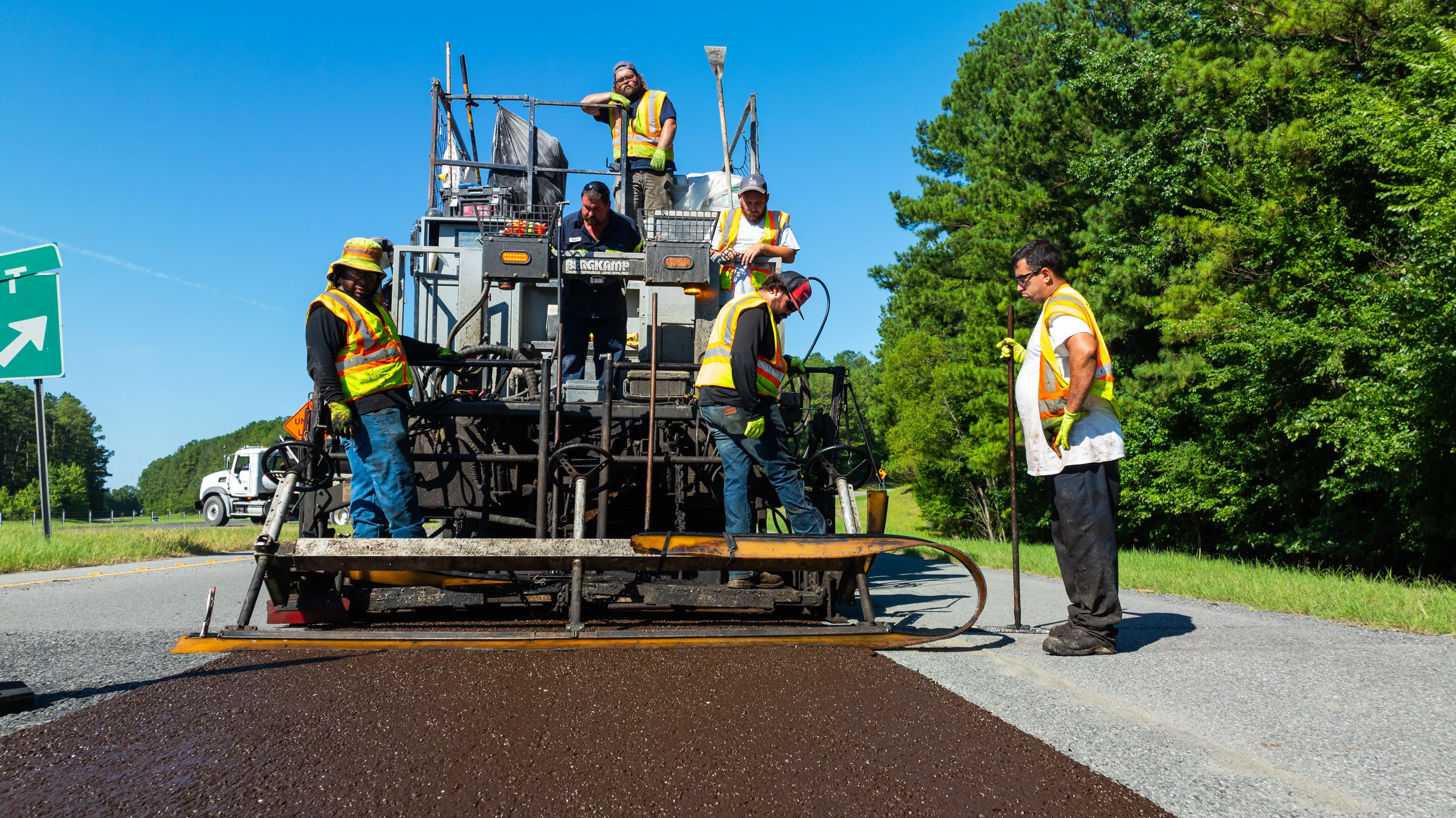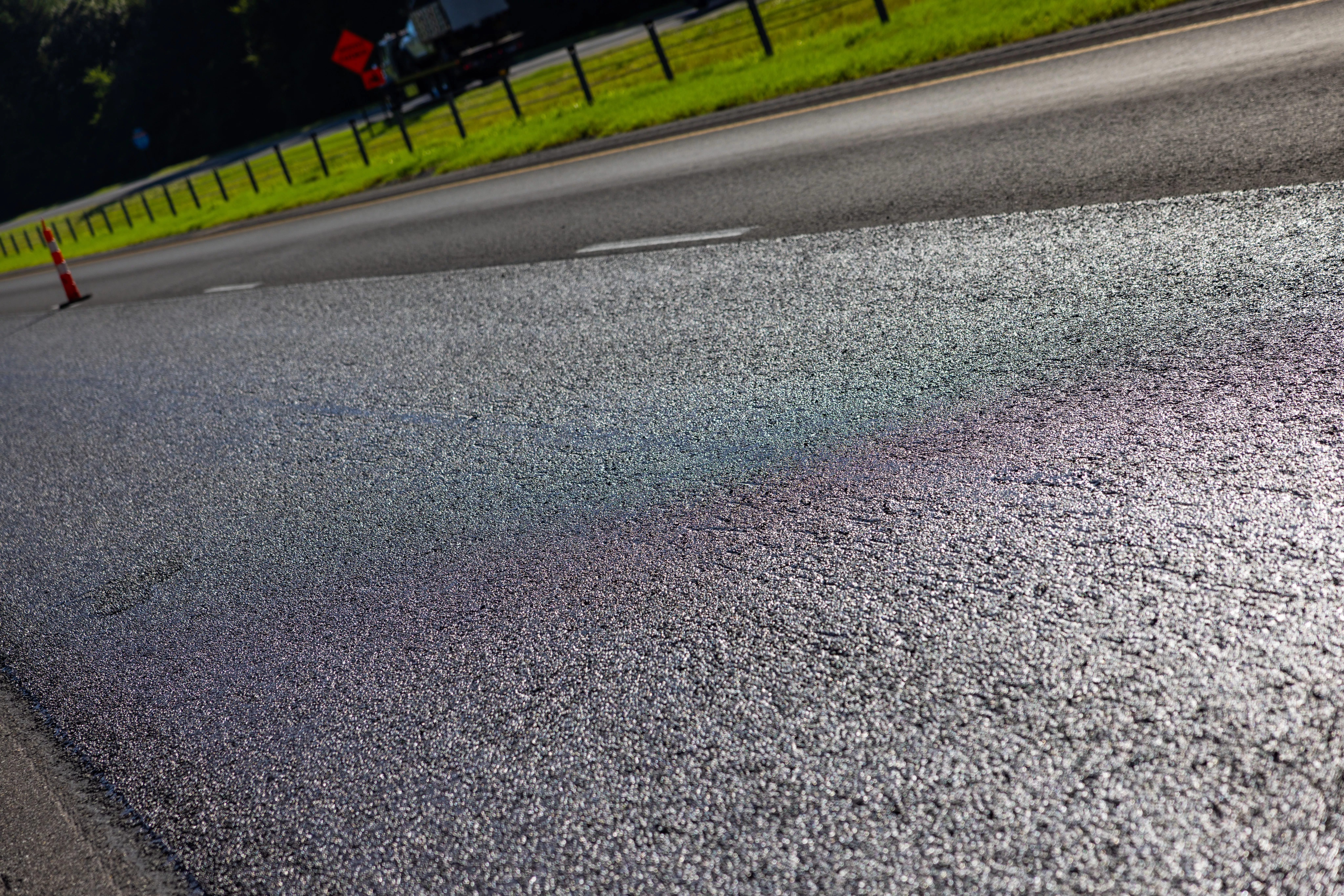THE RIGHT SOLUTION
During the 2017 demo, contractors applied eFlex, a highly modified micro surfacing supplied by Ergon Asphalt & Emulsions (Ergon A&E) on I-59 along Mile Markers 19 - 21. This was the first time highly modified micro surfacing was applied on an Alabama interstate. Compared to the OGFC applied at the same time in that area, the highly modified micro surfacing has held up well to date. The results influenced ALDOT’s decision to try the treatment on a larger section of I-59 in 2024 — the largest highly modified micro surfacing job on an Alabama interstate. Ergon A&E supplied eFlex for this project as well.
BENEFITS OF EFLEX FOR HIGHLY MODIFIED MICRO SURFACING PROJECTS
eFlex is part of Ergon A&E’s eSeries line of high-performing pavement preservation and maintenance solutions and is designed to restore oxidized pavements, address raveling and provide a tough wearing surface able to withstand scuffing and tearing soon after application. It also provides a continuously high friction surface throughout the life of the treatment. eFlex is ideal for high-volume, high-speed roadways and those where constant braking and heavy passenger and utility vehicles are prevalent.
ALDOT is no stranger to micro surfacing treatments, having utilized both conventional and highly modified options for maintenance projects on roadways throughout the state with varying traffic volumes. They chose a high-polymer option for enhanced durability on I-59 due to its heavy traffic volume.
APPLICATION HIGHLIGHTS
The 2024 I-59 project called for a highly modified micro surfacing across four lanes (two eastbound and two westbound) along Mile Markers 1-19 in Sumter County, Alabama — 17.884 miles. After micro milling the existing OGFC surface, the contractor, Wiregrass Construction Company Inc., applied eFlex in two lifts at 22 pounds per square yard for both. The mix design specified Type III aggregate for the first lift and Type II for the second.
"This large-scale micro surfacing initiative required exceptional teamwork, not only within Wiregrass Construction but also in collaboration with the agency and suppliers," said Matt Sony, Pavement Preservation Manager for Wiregrass Construction. This eFlex on I-59 application was the first micro surfacing job for the company’s Pavement Preservation Division.
For both eastbound and westbound applications, crews shifted traffic to one lane while the other received treatment, returning traffic to the surface within 1 to 1 ½ hours following each application.
"The strong communication and coordination between ALDOT, our suppliers and our team ensured that the final product met expectations," said Sony.
SERVICE LIFE EXTENSION
Based on prior performance of the 2017 demo, ALDOT expects to get almost 10 years of service life out of the sections treated with highly modified micro surfacing for this 2024 project.
"Where we are anticipating the advantage is the performance longevity of the micro surfacing," said Lyndi Blackburn, P.E., Assistant Region Engineer for ALDOT – West Central Region. "So far, it appears to be performing as anticipated, and we are happy with the results." While there are multiple applications that could have restored I-59, including a new layer of OGFC, ALDOT anticipates the highly modified micro surfacing applications will prove to be economically beneficial over time, as it is expected to delay maintenance for a longer period.
THE STRATEGIC APPROACH TO SAVING YOUR PAVEMENTS
For agencies with roads showing signs of distress sooner than budgets allow, cost-efficient treatments, like highly modified micro surfacing, can keep asphalt pavements in good condition for an extended time.
Micro surfacing and other preservation treatments are key to stretching budgets to treat more roads at the right time, improving the integrity of your network long term.
Contact one of our expert resources to learn how you can flex your budget and save your roads with eFlex today.












